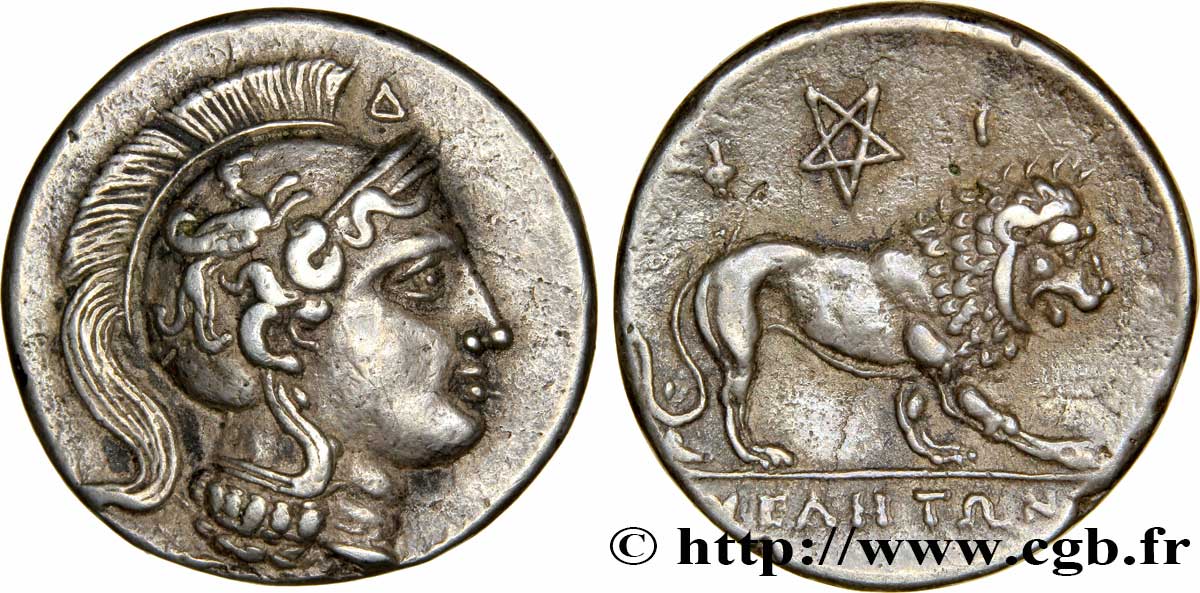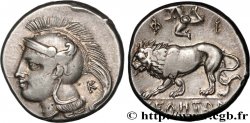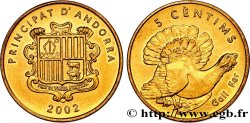v61_0004 - LUCANIA - VELIA Nomos, statère ou didrachme
MONNAIES 61 (2014)
Prezzo di inizio : 480.00 €
Valutazione : 780.00 €
Prezzo realizzato : 917.00 €
Numero di offerte : 4
Offerta maxima : 1 000.00 €
Prezzo di inizio : 480.00 €
Valutazione : 780.00 €
Prezzo realizzato : 917.00 €
Numero di offerte : 4
Offerta maxima : 1 000.00 €
Tipo : Nomos, statère ou didrachme
Data: c. 305/304-293/290 AC.
Nome della officina / città: Lucanie, Vélia
Metallo : argento
Diametro : 20 mm
Asse di coniazione : 1 h.
Peso : 6,75 g.
Grado di rarità : R1
Emission: groupe VII, section 72
Commenti sullo stato di conservazione:
Exemplaire sur un flan large bien centré des deux côtés. Très belle tête d’Athéna au droit finement détaillé. Joli revers de style fin à l’usure superficielle. Très belle patine de médaillier avec des reflets mordorés
N° nelle opere di riferimento :
Diritto
Titolatura diritto : ANÉPIGRAPHE.
Descrittivo diritto : Tête d'Athéna à droite, coiffée du casque attique à cimier avec triple aigrette, orné d'un griffon.
Rovescio
Descrittivo rovescio : Lion passant à droite ; pentagramme au-dessus.
Legenda rovescio : UELHTWN/ F-I
Commento
Très tôt, le monnayage de Vélia a été décrit comme ayant inspiré la drachme lourde de Marseille (LT. 785-791). Certains l’ont même décrit comme un monnayage symmachique : un lion de Vélia étant l’équivalent de deux lions de Marseille. Aujourd’hui, cette théorie est remise en cause, par G. Depeyrot, non sans arguments, mais avec une certaine acrimonie. Le lion de Vélia a pu servir de modèle à celui de Marseille, mais à quelle date ? La frappe à Vélia commence dans la seconde moitié du Ve siècle avant J.-C. pour se poursuivre jusqu’en 281 avant J.-C. À quel moment les Massaliotes auraient-ils empruntés le lion de Vélia ?.
Very early on, the coinage of Velia was described as having inspired the heavy drachma of Marseille (LT. 785-791). Some have even described it as a symmachic coinage: a lion of Velia being the equivalent of two lions of Marseille. Today, this theory is called into question by G. Depeyrot, not without arguments, but with a certain acrimony. The lion of Vélia could have served as a model for that of Marseille, but at what date? The minting at Velia began in the second half of the 5th century BC and continued until 281 BC. When would the Massaliotes have borrowed the lion from Velia?
Very early on, the coinage of Velia was described as having inspired the heavy drachma of Marseille (LT. 785-791). Some have even described it as a symmachic coinage: a lion of Velia being the equivalent of two lions of Marseille. Today, this theory is called into question by G. Depeyrot, not without arguments, but with a certain acrimony. The lion of Vélia could have served as a model for that of Marseille, but at what date? The minting at Velia began in the second half of the 5th century BC and continued until 281 BC. When would the Massaliotes have borrowed the lion from Velia?








 Segnalare un errore
Segnalare un errore Stampate la pagina
Stampate la pagina Condividi mia selezione
Condividi mia selezione Fai una domanda
Fai una domanda Consegnare / vendere
Consegnare / vendere
 Descrittivo
Descrittivo















